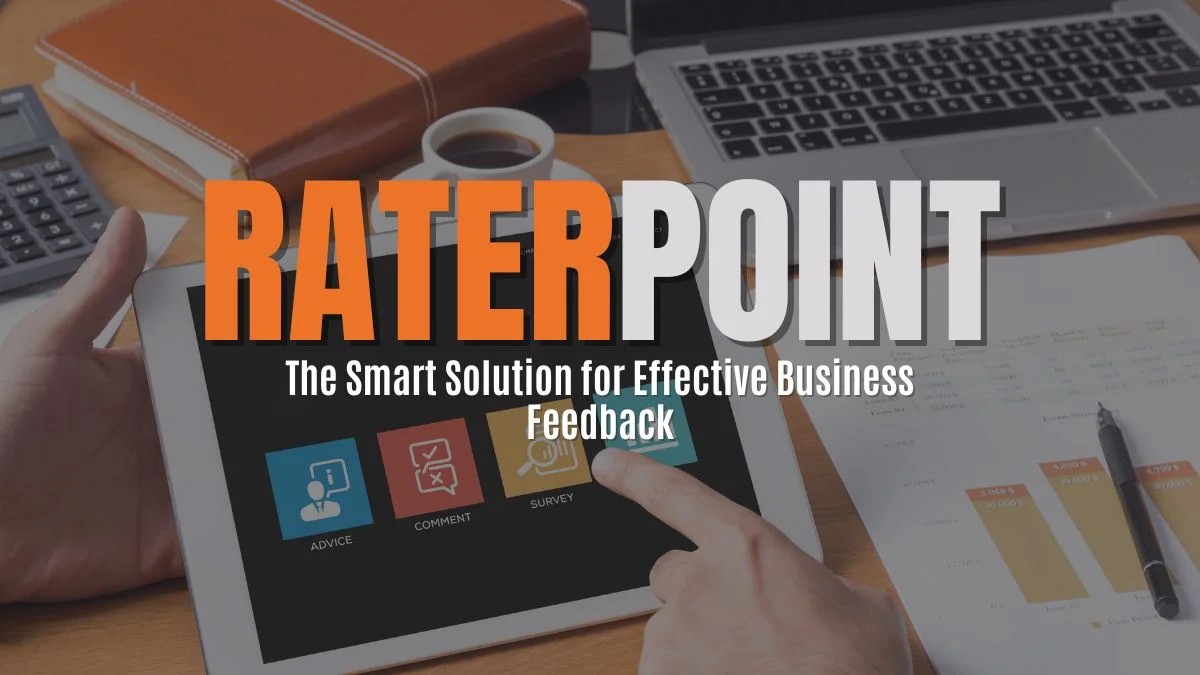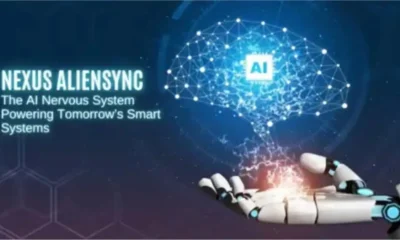GENERAL
RaterPoint: The Smart Solution for Effective Business Feedback

The role of collecting and responding to feedback in such business is more critical than ever before, especially within the current complex business setting. RaterPoint is a contemporary feedback management tool aimed at facilitating the smooth connection of the organization with employees. Through its collection, analysis, and response capabilities, RaterPoint places a wide sweep of powerful tools in the hands of businesses determined to improve performance, satisfy customers, and sustain a passion for effectiveness. Features like interactive survey tools, real-time data and smart analysis make it very easy for organizations to deal with feedback from all the rater points possible.
The Role of Feedback in Organizational Growth
The reception is a significant catalyst for the development of an organization since data is collected regarding the organisation’s strengths and weaknesses. Feedback is an essential component in figuring out what areas of business demand attention be it employees or customers. This happens because traditional methods are either inadequate or not as effective; hence, the gap between opportunities or response and implementation is sometimes widened. RaterPoint closes this gap by offering a simple package that serves to collect feedback instantly while offering an analysis of the feedback given. The platform is built with robust encryption technologies to protect the feedback and personal data of employees and customers.

Core Features of RaterPoint:
- User-Friendly Survey Tools: It is very easy to develop surveys with different types of questions and share them via the web, as an application or by email.
- Real-Time Data Dashboards: Live walls that show trends and real-time feedback, as well as current KPIs and customers’ moods and sentiments.
- Anonymous Feedback Options: Problem solving communication avenues that are protected, which means reporters can be assured that their feedback will remain confidential.
- Seamless Integration with CRM and HR Systems: Full compliance with the reqs of popular tools like Salesforce, Workday, and BambooHR for data sharing and feedback management.
- Advanced Analytics: Utilize applied analysis of raw feedback with the help of predictive statistics, sentiment analysis and trend recognition
How RaterPoint Transforms Feedback into Actionable Insights
The true value of RaterPoint lies in its ability to turn raw feedback data into actionable insights. Using advanced analytics, it processes and interprets large volumes of feedback, identifying patterns, emerging trends, and areas that need attention. This means organizations don’t just gather feedback but understand what that feedback truly means and how it impacts the business. For example, conducting sentiment analysis on employee surveys can reveal underlying emotions and concerns that may not be immediately visible. This allows businesses to address issues proactively and align strategies with employee needs. Likewise, customer feedback can be analyzed to identify pain points in products or services, enabling the company to refine its offerings and improve satisfaction. RaterPoint’s robust analytics capabilities ensure that businesses can make informed decisions based on real-time, data-driven insights.
User-Friendly Survey Tools
Our surveys are easy to use and are highly customizable to allow businesses to get the necessary feedback they require from their employees and customers through RaterPoint apps. Multiple choices, Likert scales, open-ended questions and many more options are available on the platform so that any company can develop surveys of their desired type. Generally, surveys can be sent to some selected people in order to capture the responses of the right people to the right issues. It is easy to use and friendly for non-professional users since they can create and launch surveys without any deep technical knowledge of surveying or analysis.
Real-Time Data Dashboards
RaterPoint’s real-time data dashboards will present businesses with real-time feedback trends with the sentiment. These tools, in the form of solutions, represent real-time KPIs and customer insights, enabling organizations to monitor the morale pulse of their employees and customers. Self-service enables specific analysis and benchmarks of interest to a business, for example, employee engagement levels, and filters on the feedback events of interest to the business while setting thresholds to alert the business. This real-time feedback enables businesses to recognize new problems as they unfold and address them before they become huge concerns.
Read Also: How to Simplify Complex Data
Applications of RaterPoint in Employee Feedback
RaterPoint’s capabilities extend beyond data collection to foster a supportive and engaging workplace culture.
- Measure Employee Satisfaction: Gather insights into morale, engagement, and satisfaction levels across teams.
- Track Leadership Effectiveness: Assess leadership performance and identify areas for improvement through targeted feedback.
- Design Development Programs: Use feedback to highlight skills gaps and craft training initiatives tailored to employee needs.
- Promote Inclusivity: Encourage diverse perspectives to ensure all employees feel valued and heard.
- Monitor Workplace Trends: Identify recurring patterns in employee feedback to proactively address emerging issues.

Improving Customer Experience with RaterPoint
Customer experience also stands as another specialization of RaterPoint as it allows companies to get more information from their clients regarding their experience in order to adapt to it. Through feedback on products, services, and experiences with company employees, RaterPoint helps solve problems and assess critical and positive issues. For example, a company can use it to monitor customers’ needs, satisfaction levels, and possible problems after a service encounter. Through real-time analysis of artefacts such as customer reviews, organisations are able to make changes in the existing products or processes, which results in increased organisational customer satisfaction and, therefore, organisational customer loyalty.
Data Security and Compliance in Feedback Management
Data security and regulatory compliance are top priorities for RaterPoint. The platform is built with robust encryption technologies to protect the feedback and personal data of employees and customers. Whether businesses are dealing with sensitive employee surveys or customer feedback, RaterPoint ensures that all information is securely stored and protected from unauthorized access. Additionally, RaterPoint is designed to comply with key regulations such as GDPR and HIPAA, ensuring that businesses can collect feedback without worrying about legal ramifications. data
Conclusion
RaterPoint stands as a powerful and comprehensive feedback management platform designed to transform raw feedback into meaningful, actionable insights that drive performance and foster a culture of continuous improvement within organizations. Through its user-friendly survey tools, real-time data dashboards, and robust analytics capabilities, RaterPoint empowers organizations to collect, analyze, and act on feedback from both employees and customers effectively. Ultimately, it’s flexible, customizable, and secure feedback management system provides organizations with the tools needed to promote continuous improvement, innovation, and growth, making it an indispensable tool for businesses aiming to stay ahead in an ever-evolving marketplace.
-

 BIOGRAPHY7 months ago
BIOGRAPHY7 months agoBehind the Scenes with Sandra Orlow: An Exclusive Interview
-

 HOME1 year ago
HOME1 year agoDiscovering Insights: A Deep Dive into the //vital-mag.net blog
-

 HOME1 year ago
HOME1 year agoSifangds in Action: Real-Life Applications and Success Stories
-

 BIOGRAPHY1 year ago
BIOGRAPHY1 year agoThe Woman Behind the Comedian: Meet Andrew Santino Wife




























